The Peterhof Palace is a series of palaces and gardens laid out on the orders of Peter the Great. These Palaces and gardens are sometimes referred as the "Russian Versailles" and are most famous for their fountains.
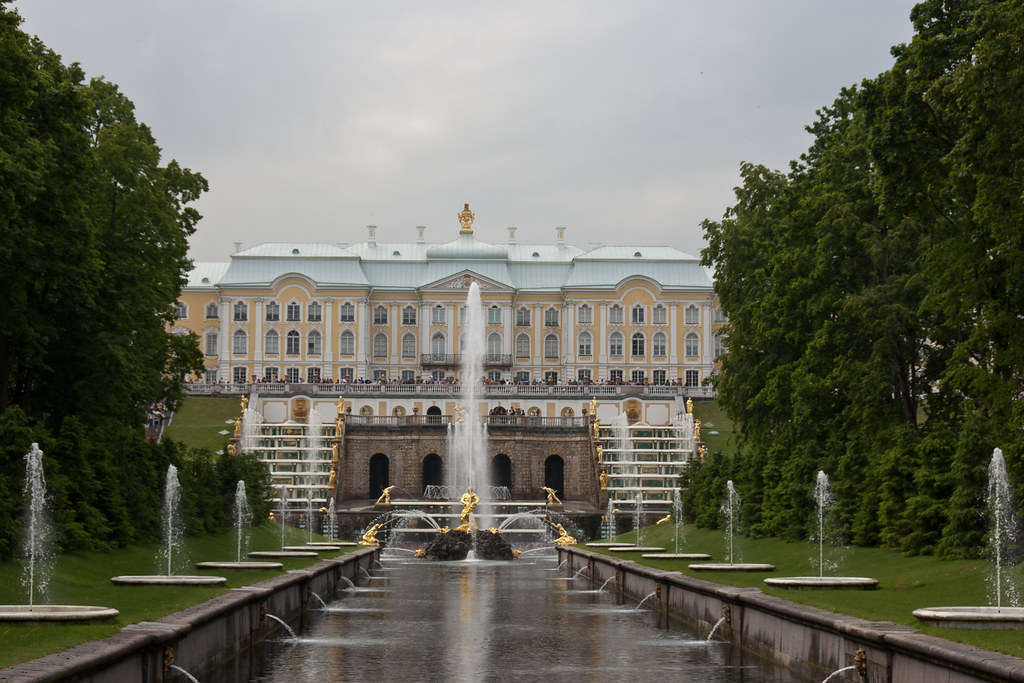
Above: Peterhoff Palace with the Grand Cascade in front.
Peter began construction of the Palace in 1714 based on his own sketches. This was Peter's Summer Palace that he would use on his way coming and going from Europe through the harbour at Kronstadt (an island protecting Saint Petersburg from the Baltic). On my tour we visited inside the Palace (which is not actually very large) but sadly we were not allowed to take photos!

Above: The Grand Cascade at Peterhoff.
The Grand Cascade is modelled on one constructed for Louis XIV at his Château de Marly but here, the Cascade enters a sea channel which stretches out into the Baltic and is one of the most extensive waterworks of the Baroque period. The channel bisects the Lower Gardens containing the majority of Peterhof's fountains, as well as several small palaces and outbuildings. The expanse of the Lower Gardens is designed in the formal style of French formal gardens of the 17th century.
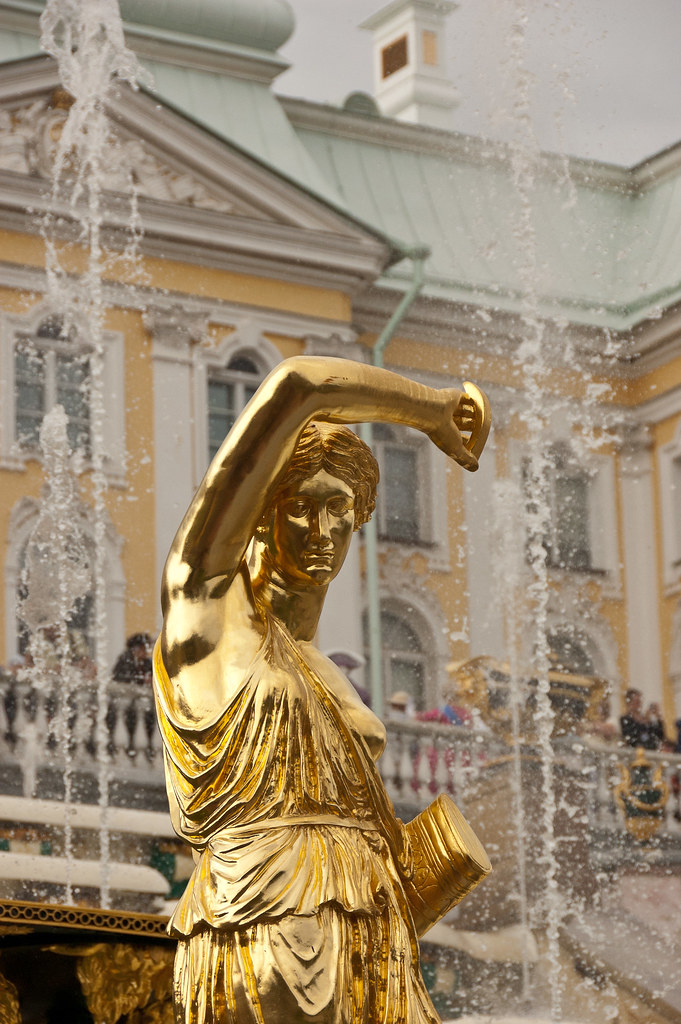
Above: One of the Grand Cascade statues. In celebration of Saint Petersburg's 300th anniversary in 2003, much of the building and statuary in Peterhof has been restored and new gilt-work abounds.
Perhaps the greatest technological achievement of Peterhof is that all of the fountains operate without the use of pumps. Water is supplied from natural springs and collects in reservoirs in the Upper Gardens. The elevation difference creates the pressure that drives most of the fountains of the Lower Gardens, including the Grand Cascade.
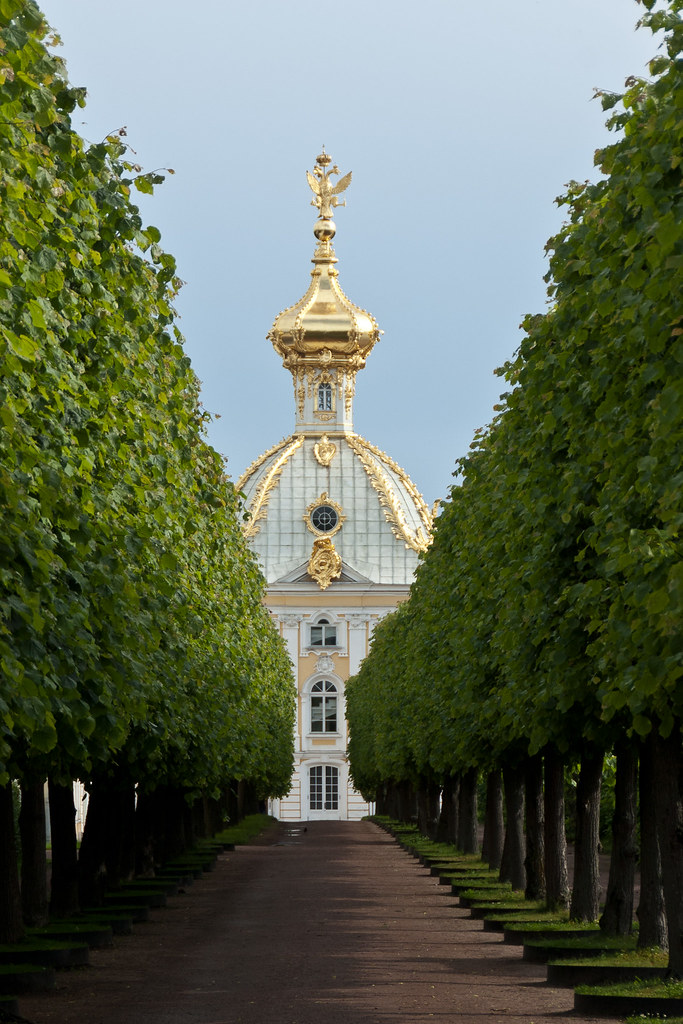
Above: One of the smaller palaces in the Upper Gardens.
The occupying forces of the German Army captured Peterhof in 1941, and despite the frantic attempts by employees to save treasures and dismantle and bury the fountain sculptures in the weeks prior to the invasion, many of them were destroyed, and the palace was partially exploded and left to burn. Restoration work began almost immediately after the end of the war and continues to this day.
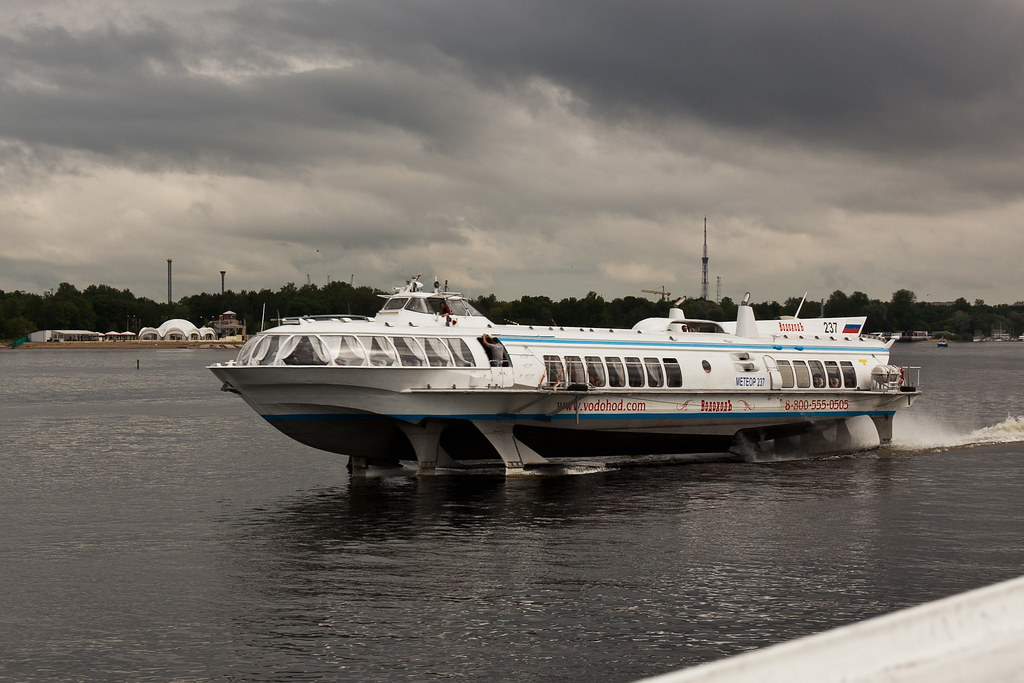
Above: We took a hydrofoil back to the city centre from the jetty at Peterhof.
After lunch in the Lower Gardens, we caught a hydrofoil back to Saint Petersburg, which was a very smooth and fast ride! We finished our tour with a visit to the Church of the Saviour on Spilled Blood (see previous post,) and then on my next visit to Russia, I took a tour to the Catherine Palace.
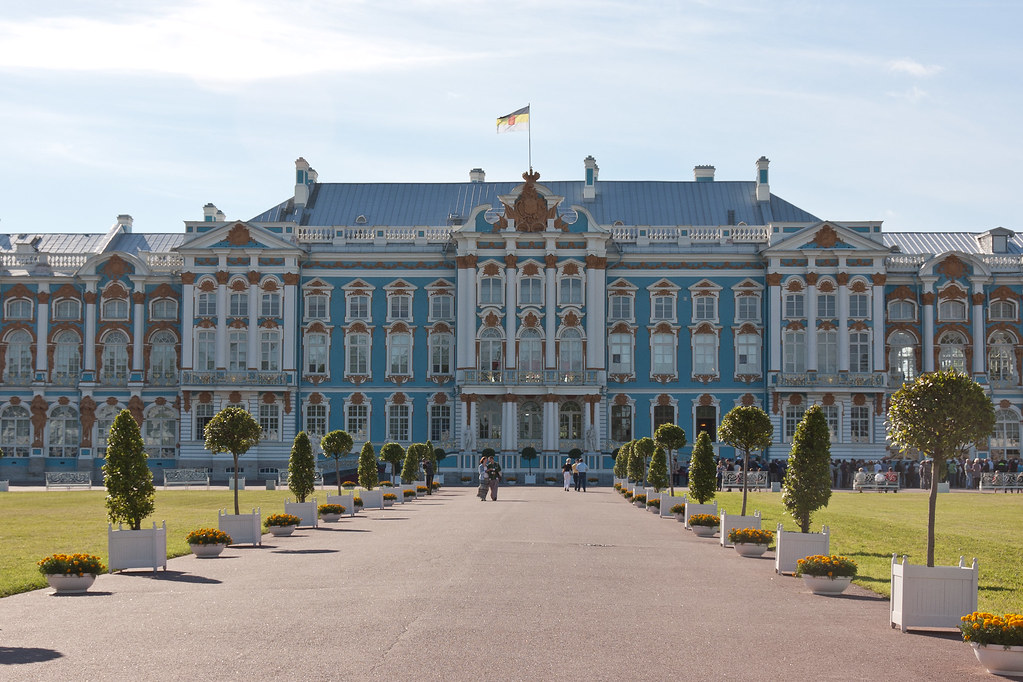
Above: The north side of Catherine Palace - all the stucco details sparkled with gold until 1773, when Catherine II had gilding replaced with olive drab paint!
The Catherine Palace was the Rococo summer residence of the Russian tsars, located in the town of Tsarskoye Selo (Pushkin), 25 km south-east of Saint Petersburg. The residence originated in 1717, when Catherine I of Russia engaged the German architect Johann-Friedrich Braunstein to construct a summer palace for her pleasure.
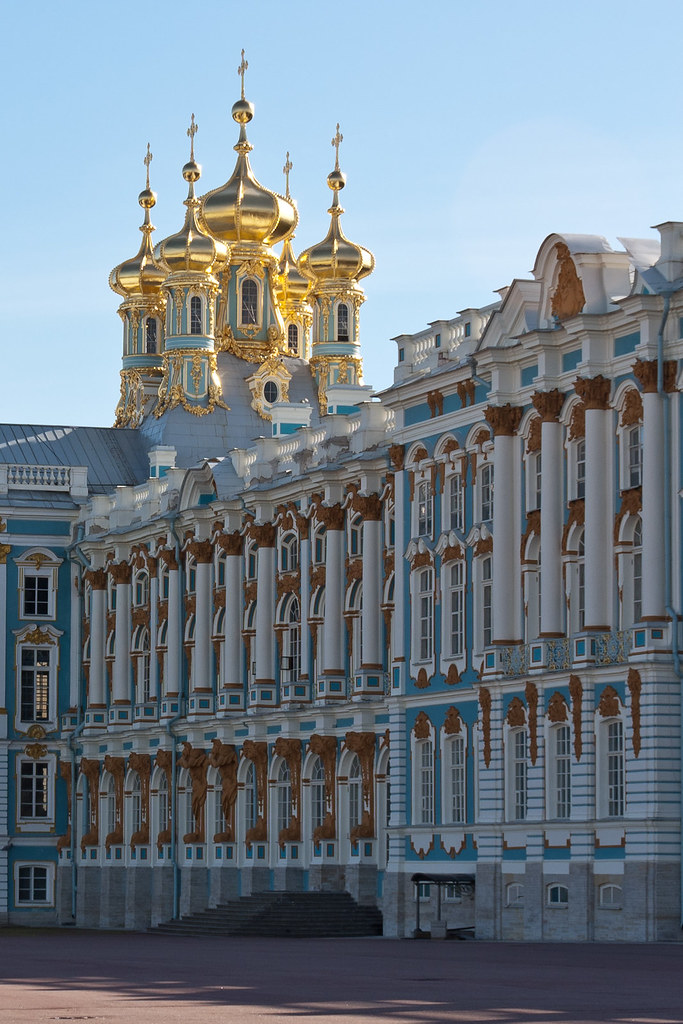
Above: The Chapel as seen from the north side of the Palace.
In 1733, Empress Anna commissioned Mikhail Zemtsov and Andrei Kvasov to expand the Catherine Palace. Empress Elizabeth, however, found her mother's residence outdated and incommodious and in May 1752 asked her court architect Bartolomeo Rastrelli to demolish the old structure and replace it with a much grander edifice in a flamboyant Rococo style. Construction lasted for four years and on 30 July 1756 the architect presented the brand-new 325-meter-long palace to the Empress.
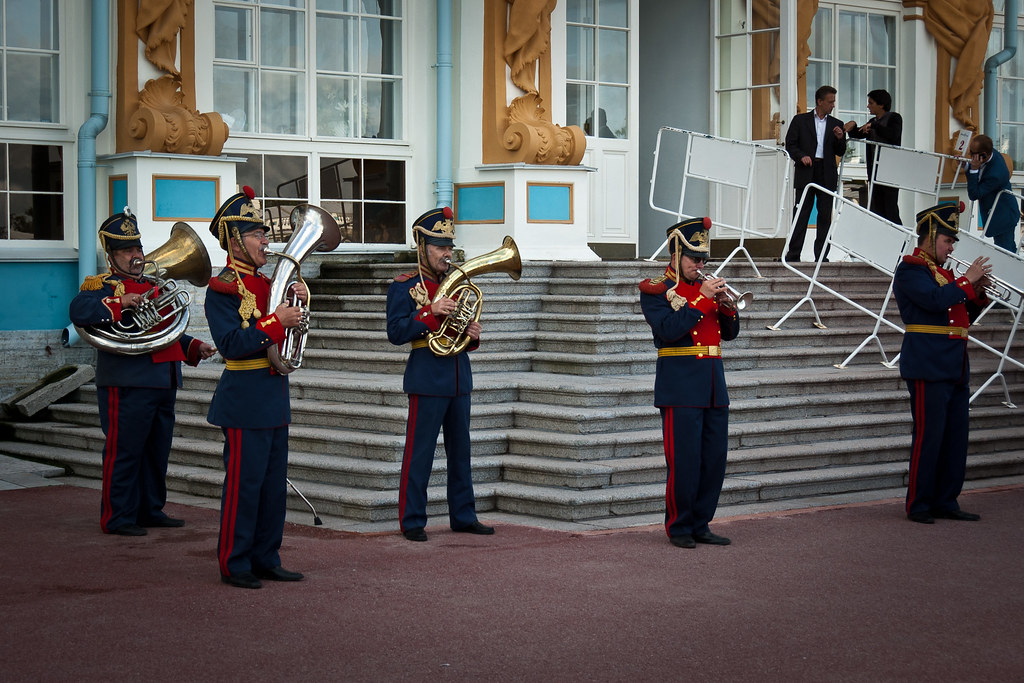
Above: On the day that we visited there was a long queue to enter the palace, but a brass band kept the crowds amused.
In front of the palace a great formal garden was laid out. It centres on the azure-and-white Hermitage Pavilion near the lake, designed by Zemtsov in 1744 and overhauled by Rastrelli in 1749.
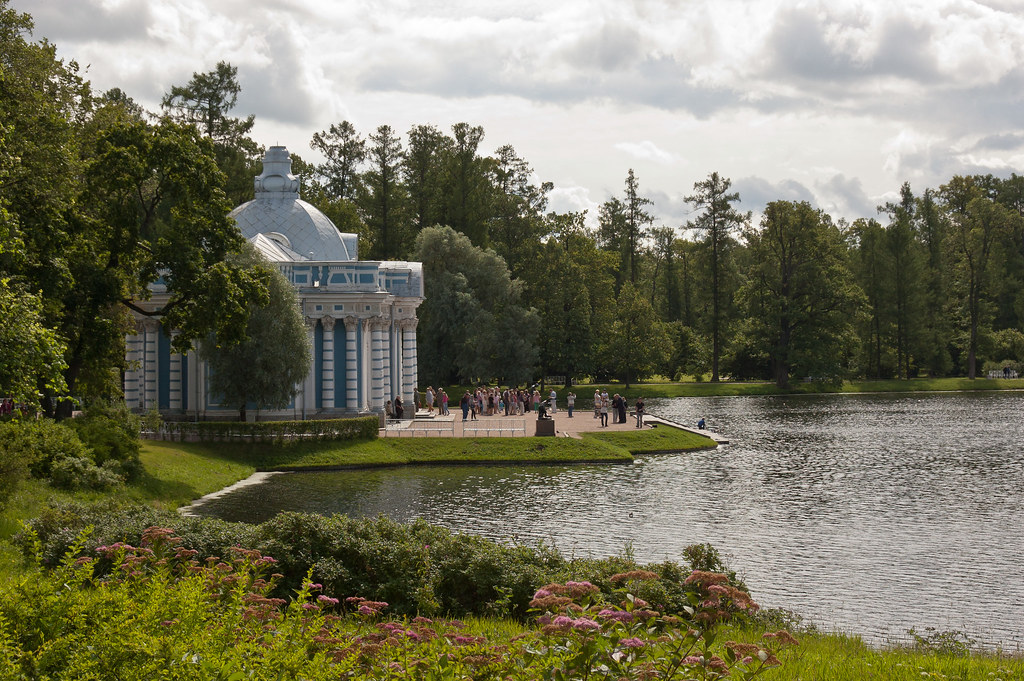
Above: The Hermitage Pavilion where we were lucky enough to hear a Russian male choir perform!
Although the palace is popularly associated with Catherine the Great, she actually regarded its 'whipped cream' architecture as old-fashioned. When she ascended the throne, a number of statues in the park were being covered with gold, in accordance with the last wish of Empress Elizabeth, yet the new monarch had all the works suspended upon being informed about the expense.
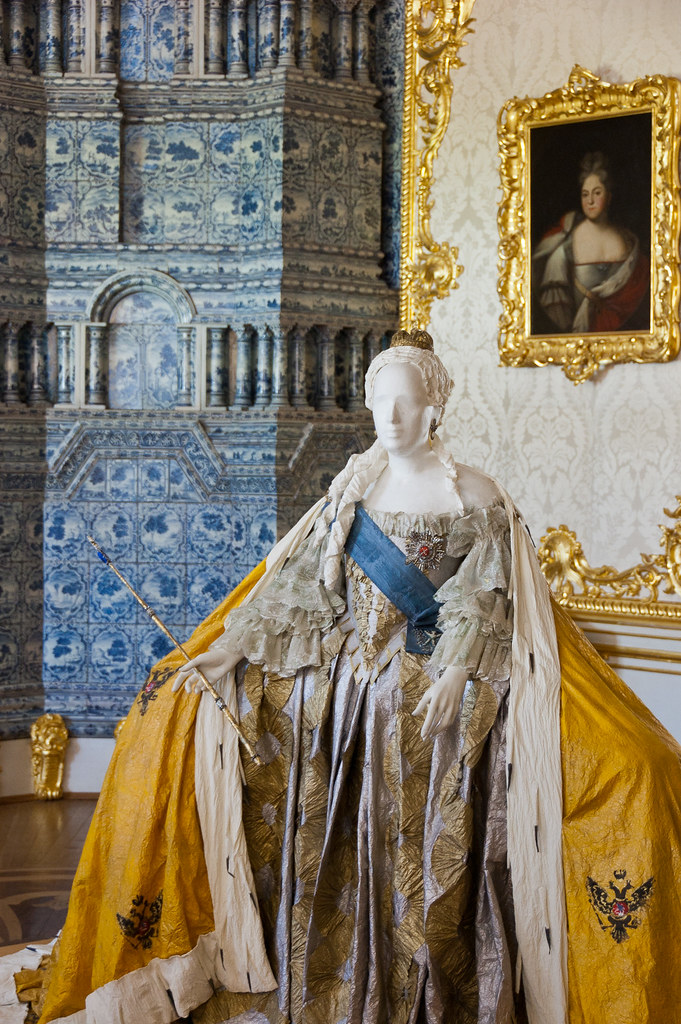
Above: Royal outfit!
The palace is best known for Rastrelli's grand suit of formal rooms known as the Golden Enfilade. It starts at the spacious airy ballroom, the "Grand Hall" or the "Hall of Lights", with a spectacular painted ceiling, and comprises numerous distinctively decorated smaller rooms, including the reproduced Amber Room.
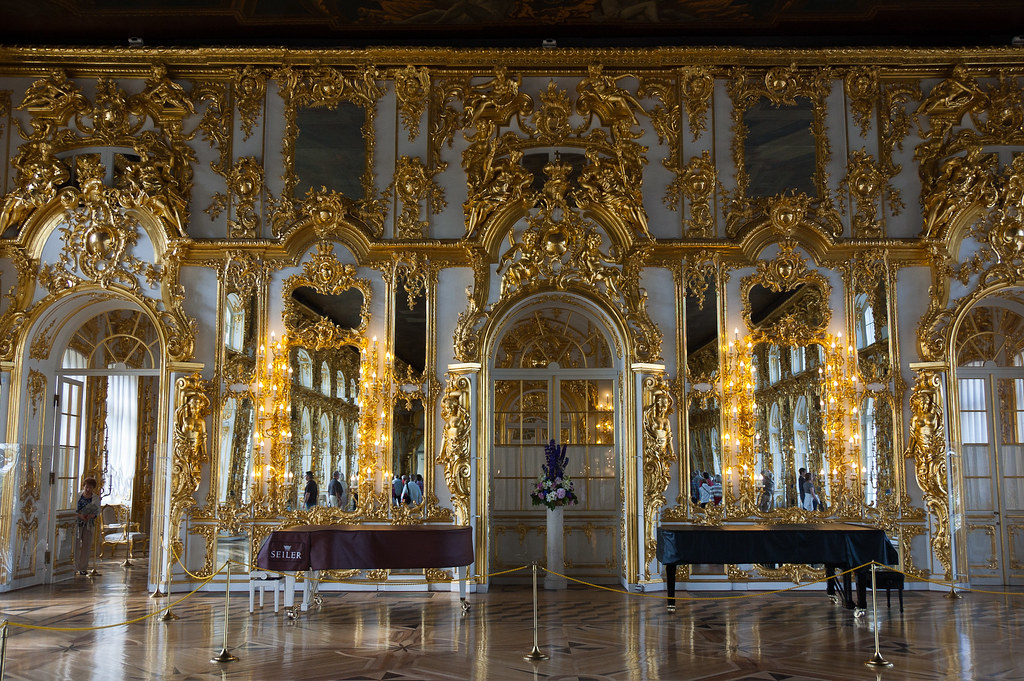
Above: The Grand Hall, also called the Hall of Lights.
When the German forces retreated after the siege on the city, they had the residence intentionally destroyed, leaving only the hollow shell of the palace behind. Prior to World War II, the Russian archivists managed to document a fair amount of the contents, which proved of great importance in reconstructing the palace. Although the largest part of the reconstruction was completed in time for the Tercentenary of St Petersburg in 2003, much work is still required to restore the palace to its former glory. One of the most spectacular reconstructions is the amber room - a room with walls made of amber:
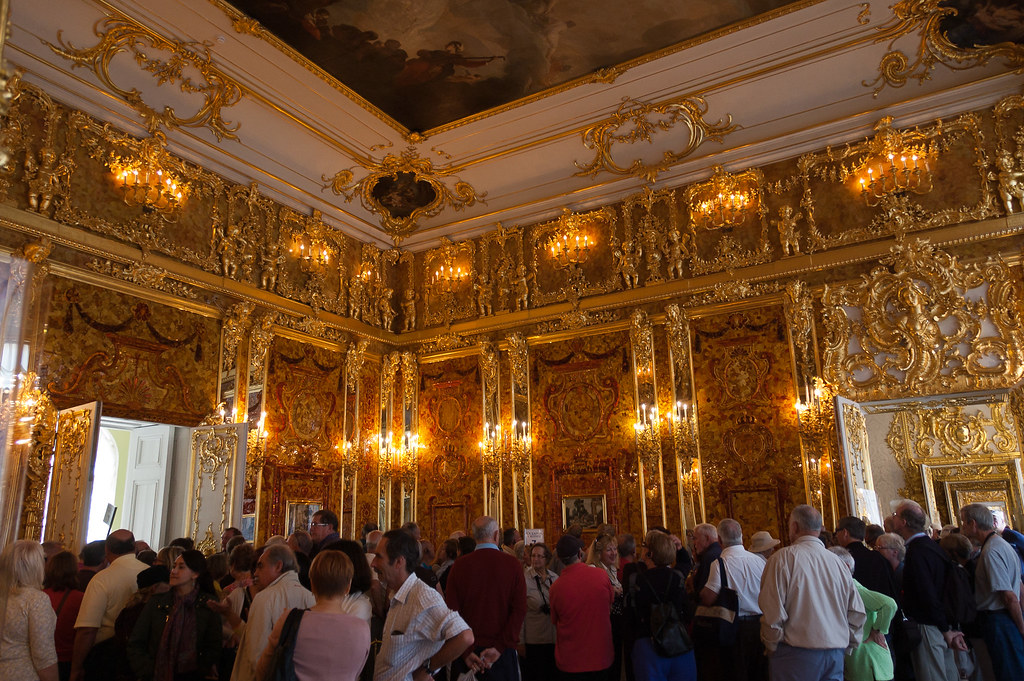
Above: The Amber Room - photography strictly prohibited but I snuck in a quick pic anyway!
Thanks for reading - I hope you enjoyed this glimpse of Saint Petersburg!

No comments:
Post a Comment